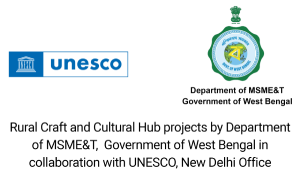Adi ( Old Traditional)- Adi is the oldest style when it was primarily an oral tradition. Traditionally, Bhaduria Jhumur was practiced in the Bengali month of Bhadra (mid-August to mid-September). The songs are generally very short with a repeated refrain. Pathos predominates Bhaduria Jhumur. This form of Jhumur mainly accompanies Pata or Danrh dance. That is why Bhaduria Jhumur is also known as Danrh Jhumur. This Jhumur is sung in different tunes and rhythms. Many of these have been lost over time but some can still be heard.
Maddhaya (Central/Middle era): The period after the time of Sri Sri Chaityanaya Deva (who brought in major societal reforms to abolish caste system) saw radical changes in people’s thoughts and this got reflected in Jhumur songs of the time. The merging of colloquial Jhumur with classical forms and Kirtan tunes led to the development of Darbari Jhumur and Naachnisalia performed in the courts of kings and landlords. The tunes, language, emotion and contents are totally different from other forms of Jhumur. The main contents of this genre are love of Radha-Krishna and Bhaktitatva of Vaishnavism.
Adhunik (contemporary)- Contemporary Jhumur, without Vaishnavism, Radha-Krishna, social rituals and festivals, came into being after Independence. Contemporary Jhumur reflects everyday life and nature. Although the tunes have not changed much, it has become more contemporary and captivating. The instruments, too, have changed with time.
Instrument- Dhamsa – Membraphonic wooden percussion instrument with a deep sound, Madol – Membraphonic percussion instrument, Bamboo flute are the traditional instruments of Jhumur. With time Harmonium is also played by some artists. Purulia tribal communities (leader: Naren Hansda) also use locally made String instrument 'Kendri'.



